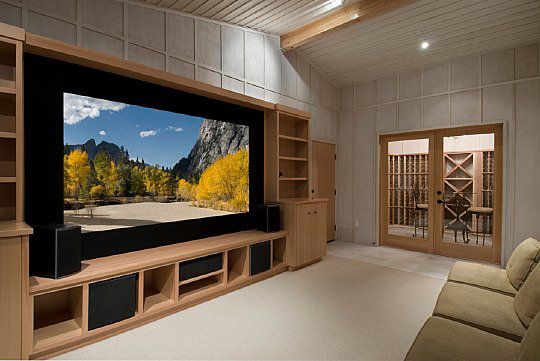

#10 Get a code in your head
Checking your local building codes can save you from running into big problems in the long run. Be sure to know what you can and cannot do, and the permits you need to do it, before starting any basement remodel. It is especially important to make sure that all electrical work is done to code. There's no bigger letdown than getting slapped with a fine for turning your basement into the man cave you've always wanted, just because you didn't do your homework.
#9 Keep it dry
Why spend thousands of dollars on a basement remodel if the first heavy spring rain is going to turn your new home gym into an indoor pool? Unanticipated water problems can make your enthusiastic upgrade all for naught. A simple first step is to check your home for clogged downspouts that can cause eaves to overflow, making water run pool around your foundation. These puddles can quickly seep below the surface and into the lower regions of your home. You should also make sure that the ground slopes away from your foundation so gravity carries it away from your foundation.
#8 Raise the…floor
Keep floors warm, dry, and comfortable for barefoot family members by raising it and installing a vapor barrier. Place 2x4s framed at a distance of 16 inches with a strip of insulation in each space. Top it off with board insulation and 3/4" plywood. This will serve to protect and insulate the area between the cement and the flooring, as well as provide a comfortable walking surface.
#7 Remember…suspenders are cool
To make future maintenance a breeze, install suspended ceiling tiles rather than using drywall. Tiles can easily be lifted out of the way when you need to make a quick fix. If you opt for drywall, you will have to be sure to create access panels, or you won't be to get to your plumbing and electrics should problems arise.
#6 Avoid the vapors
Moisture seepage leads to big problems like mold and mildew that can ruin your basement refinishing efforts. To block out unwanted wetness, polyurethane sheeting is extremely effective. When insulating your newly-finished space, choose insulation sheets that come enclosed in a vapor barrier. This will not only keep moisture out, it will also help you avoid the nasty itch you get from contact with insulation fibers.
#5 Think base thoughts
Basements are easily the coolest room in nearly every house, so you'll want to choose heating method that will keep things warm without costing you a fortune. If your basement isn't super-enormous, electric baseboard heating is an excellent choice for basements. Baseboard heaters are easy to install; attach them to the baseboard area and you're good to go. They are also an affordable heating option that frees up remodeling dollars for more fun things. The downside: electric baseboard heating may not be powerful enough to warm up a really large basement space. Electric heaters are also less efficient than other sources, but they definitely are at the top of the game when it comes to cost and convenience.
#4 It's recess time
Due to their low elevation within the home, basements often lack, or are completely devoid of natural light. Step out of the dark ages and make your basement space more inviting by installing recessed lighting. The tall people in your life will appreciate not having to spend their downstairs time avoiding concussions caused by collisions with low-hanging fixtures.
#3 Shoot some studs
Give studs a secure hold and satisfy your affinity for firearms all in one go. Rather than rendering yourself weary and white-knuckled with hours of incessant nailing, affix studs with a "shotgun" designed for the purpose. Choose "bullets" of the proper caliber for the materials you are working with (green, yellow, red, and brown all indicate different strengths) and use the time you save to pick out a game system for your new family-friendly space.
#2 Go "fur" it
No, we're not talking about installing wall-to-wall shag carpeting. Adding metal furring strips such as those on offer from Chi between inner and outer walls helps to keep moisture form making its way to your inner walls. An additional ½" of space can work wonders when it comes to warding off wetness and keeping heat inside where it should be.
#1 Go naked
Forget about finishing the furnace or utility rooms because building codes require specific clearances between units and walls (often two feet on all sides). These fixtures are rarely attractive to look at, so why bother decorating the space around them. It is also doubtful you want to spend much time cozying up next to a noisy furnace, admiring your water heater, or watching clothes dry, so leave their surroundings bare and use the money on that bar you've always wanted.
Posted by: Ahmed Muztaba





